
It's hard to believe that we are already at the time of year when it will be snowing once again. In fact, it has already snowed an inch here and they are predicting snow for Thanksgiving Day. The good news is that it will melt quickly. The bad news is we're just at the start of the season. Oh, joy!
Something has happened to me over the years. Aging has definitely changed my attitude towards snow. When I was a kid I
LOVED the snow, mainly because it meant no school. I loved playing in it, making snow angels all over the lawn, building forts at the end of our driveway, making snowmen, throwing snowballs, etc. To me there was always something magical and mystical about snowflakes and snow.
Of course, snow also meant shoveling the driveway, which I hated. It wasn't the act of shoveling that bothered me. It was the fact that I had to help my brother shovel the driveway when his chores were outside and mine were inside the house. This was a long time ago when women had household chores inside the house and the men had household chores outside the house. My brother didn't help me with the laundry, dusting, washing the dishes, etc. Why did I have to help him shovel, rake the leaves, mow the lawn, etc.?
When I questioned this , my Mother would say, "Just help your brother!" I'd reply, "Aw, MA!!!" She'd look at me with one of those Mother looks (you know what I mean) and say, "Linda, just do it!" So, being the dutiful daughter that I was, I did it. However, just because I did it, it didn't mean I liked it or agreed with it.
I'm always getting side tracked, aren't I? In any event, back to the aging! I think that as you get older, and older, and older (like me) you prefer looking at pictures of snow in a magazine, not at snowflakes falling on your lawn, or on your driveway. An accumulation of 189" of snowflakes in a winters season can change ones childhood view of snowflakes being magical and mystical. With age snow becomes much more of a nuisance. It's hard to walk in, hard to drive in, and, most certainly, a pain to shovel. Isn't aging grand? To quote Doug Larson, "The aging process has you firmly in its grasp if you never get the urge to throw a snowball."
But, it's not just what I have to do with the snow, it's even annoying with regards to my wonderful dog. Don't get me wrong. He just loves the snow. In fact his middle name is "Snow Doggie!" He just loves to run and jump in it. He could stay out for hours. It's baffling that he just loves the snow, for he HATES the rain with a passion. That is truly mystifying because in both instances he gets wet. What's the difference between being wet with snow and wet with rain?Must be a doggie thing!
In any event, the problem with the snow is that after he's had all his fun he comes back in the house with snowballs all frozen and caught in his fur. The snowballs get all over the floor and the furniture. Ah, man! You have to drag out the "doggie blow-dryer" (of course he has his own blow dryer!) to melt the snowballs and dry his fur (which, of course, he just LOVES!!!) And, all the time all you can think about is
"Snow, snow! Go away! Don't return another day!"
So, given that aging has dampered my childhood love of snow, you might wonder how can I possibly love snowmen and snowladies as much as I do? Why would you want to design a doll based on something that, in it's natural state, is so annoying to me? Well, possibly because snowmen and snowladies are dolls (which we all know I love) and as dolls they don't make a mess. They can't melt all over your floor. You don't have to shovel them and throw your back out. They just sit there very lovely, allowing you to enjoy them, and to recall your wonderful childhood memories of mystical snowflakes and magical snowmen, snow angels, and snow castles.
So, like most crafters I just adore making snowmen and snowladies. Why? Because you can do so much with them. They can be Victorian, primitive, modern, grungy, raggedy, shabby chic, etc. They can be made of cloth, Styrofoam, Warm & Natural, felt, wool, terry cloth, cotton, corduroy, wood, clay, terra cotta, etc. Just about anything. They can be happy. They can be sad. They can be partially melting or three levels full. They can be skinny or fat. Large or small. Ornaments or full size dolls. They can be added to wreaths or hung from garland. The possibilities are endless. How could you not love them so?
If you've never made a snowman, you should. They're so enjoyable to make and such a pleasure to display. You can display just one or a whole bunch together, or various clusters all around the house. Just let you imagination be your guide. Display them inside, all around, or upside down. Put then on your door, on your walls, on your shelves. Put them inside, put them outside, put them anywhere. Make them, decorate them, and then relax and enjoy them. For to be sure. In a few short weeks they may be watching you as you bend your knees, lift and throw (there goes my back!) all that snow.
SNOW, SNOW! GO AWAY! DON'T RETURN ANOTHER DAY!
Here's a few "snowman" riddles for you:
Q. What is a snowman's favorite lunch?
A. An Iceberger!
Q. What does a snowman take when he's sick?
A. A Chill Pill!
Q. What kind of hat does a snowman wear?
A. An Ice Cap!
Q. What do you call a snow party?
A. A Snow Ball!
And the best snowman riddle:
Q. What happened when the snowlady got angry at the snowman?
A. She gave him the cold shoulder!







 I love to just browse thru history books, genealogy records, and the encyclopedia. Browsing thru the Wikipedia encyclopedia I came across the women's suffrage stamp (see picture on the left). In looking at the women's suffrage stamp I got to thinking about my great, great Aunt "Flossie" and my Grandmother "Dee." Why did these two women come to mind when I saw the stamp? They came to mind because they grew up during the time that the women's suffrage movement was at its peak.
I love to just browse thru history books, genealogy records, and the encyclopedia. Browsing thru the Wikipedia encyclopedia I came across the women's suffrage stamp (see picture on the left). In looking at the women's suffrage stamp I got to thinking about my great, great Aunt "Flossie" and my Grandmother "Dee." Why did these two women come to mind when I saw the stamp? They came to mind because they grew up during the time that the women's suffrage movement was at its peak. My "Flossie" Victorian doll is named after my great, great Aunt Florence (who is shown on the left). My great, great Aunt Flossie was born in 1882 and was the first women to go to college in our family. She graduated from Tufts University in 1904. She then went on to be one of the first women to work for the State Department of Corporations and Taxation. She worked for the state until she retired in 1947.
My "Flossie" Victorian doll is named after my great, great Aunt Florence (who is shown on the left). My great, great Aunt Flossie was born in 1882 and was the first women to go to college in our family. She graduated from Tufts University in 1904. She then went on to be one of the first women to work for the State Department of Corporations and Taxation. She worked for the state until she retired in 1947.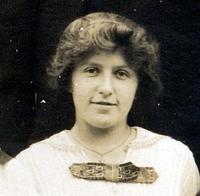 My great, great Aunt "Flossie" was a true believer of women's rights, as was my Grandmother "Dee". Both women were very intelligent and were very strong women. Both were very confident in themselves and both held strong beliefs and convictions. They both were believers in women's rights. Their beliefs definitely had a profound affect on my mother which, in turn, had an affect on me.
My great, great Aunt "Flossie" was a true believer of women's rights, as was my Grandmother "Dee". Both women were very intelligent and were very strong women. Both were very confident in themselves and both held strong beliefs and convictions. They both were believers in women's rights. Their beliefs definitely had a profound affect on my mother which, in turn, had an affect on me.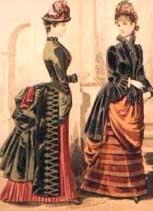 I have to wonder sometimes why I have such a fascination or passion for the fashions of the Victorian Era when I am clearly a feminist (the ultimate feminist according to my son-in-law).
I have to wonder sometimes why I have such a fascination or passion for the fashions of the Victorian Era when I am clearly a feminist (the ultimate feminist according to my son-in-law). When I think of a "Lady" either I picture someone like Audrey Hepburns' character in "My Fair Lady" or I picture a Victorian woman like the picture to the left. Someone refined and dignified. Someone who has good manners and who also just happens to be wearing a beautiful Victorian dress. I always seem to get back to the Victorian dresses, don't I? Must be an obsession. Yah think? In my mind, a "Lady" is the ultimate perfect female. But, is she really?
When I think of a "Lady" either I picture someone like Audrey Hepburns' character in "My Fair Lady" or I picture a Victorian woman like the picture to the left. Someone refined and dignified. Someone who has good manners and who also just happens to be wearing a beautiful Victorian dress. I always seem to get back to the Victorian dresses, don't I? Must be an obsession. Yah think? In my mind, a "Lady" is the ultimate perfect female. But, is she really? Childhood tea parties with ones dolls and friends were just so delightful. Weren't they? Not only did you get to have all your dollies around you, but you also got to play dress-up, too. I can remember having tea parties as a child. Sometimes it was just my dollies and me, but that was okay. They were always great company. I'd serve my dollies tea in one of my tea sets. They would carry on about this or that. We'd have a grand old time.
Childhood tea parties with ones dolls and friends were just so delightful. Weren't they? Not only did you get to have all your dollies around you, but you also got to play dress-up, too. I can remember having tea parties as a child. Sometimes it was just my dollies and me, but that was okay. They were always great company. I'd serve my dollies tea in one of my tea sets. They would carry on about this or that. We'd have a grand old time.


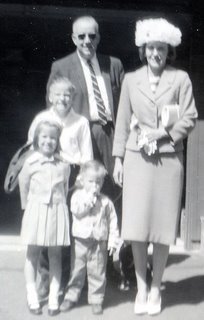 If you are a baby boomer, like I am, then you probably have many fond memories associated with dressing up in your finest attire (hopefully, new clothes) for Easter Day. I know that I do.
If you are a baby boomer, like I am, then you probably have many fond memories associated with dressing up in your finest attire (hopefully, new clothes) for Easter Day. I know that I do.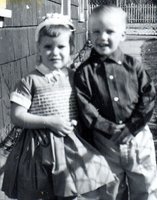
 I can remember my Mother telling me that, as I'm sure most of you can too. We all know Santa as the familiar image with his red suit, sled or sleigh, reindeer's, and sacks of toys delivering packages to
I can remember my Mother telling me that, as I'm sure most of you can too. We all know Santa as the familiar image with his red suit, sled or sleigh, reindeer's, and sacks of toys delivering packages to 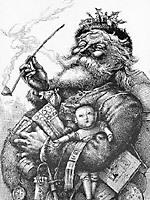 Thomas Nast helped create the kinder, more fatherly, plumper Santa as we know him today. But, Thomas Nast wasn't the only person to contribute to this legend. Clement Clarke Moore was a huge contributor as in 1822 he published his poem "A visit From St. Nicholas," bittern known as "The Night Before Christmas." His poem is the first mention of a sleigh powered by "eight tiny reindeer" and mentioning their names.
Thomas Nast helped create the kinder, more fatherly, plumper Santa as we know him today. But, Thomas Nast wasn't the only person to contribute to this legend. Clement Clarke Moore was a huge contributor as in 1822 he published his poem "A visit From St. Nicholas," bittern known as "The Night Before Christmas." His poem is the first mention of a sleigh powered by "eight tiny reindeer" and mentioning their names. The legend of Father Christmas, however, is ancient and far more complex. Part of the legend is attributed to St. Nicholas and part to a jovial medieval figure in the "Spirit of Christmas." In Russia, Father Christmas carries a piglet under one arm. St. Nicholas is also know as Santa Claus, Father Christmas, Heilige Nikolaus, and Pere Noel.
The legend of Father Christmas, however, is ancient and far more complex. Part of the legend is attributed to St. Nicholas and part to a jovial medieval figure in the "Spirit of Christmas." In Russia, Father Christmas carries a piglet under one arm. St. Nicholas is also know as Santa Claus, Father Christmas, Heilige Nikolaus, and Pere Noel.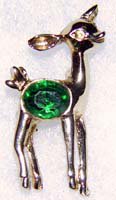 If you're a reader of my
If you're a reader of my  Every year I take them all out and look at them. What always amazes me is how they have changed in design from the first pin I received (the little Bambi deer above) to my latest (the candy canes above). And, believe it or not, I don't have any duplicates. Also (and I know this will be hard to believe), I don't have any "dollies." So, a heartfelt thanks to you Dad for starting this tradition and a heartfelt and sentimental thanks to my husband for continuing his pin tradition.
Every year I take them all out and look at them. What always amazes me is how they have changed in design from the first pin I received (the little Bambi deer above) to my latest (the candy canes above). And, believe it or not, I don't have any duplicates. Also (and I know this will be hard to believe), I don't have any "dollies." So, a heartfelt thanks to you Dad for starting this tradition and a heartfelt and sentimental thanks to my husband for continuing his pin tradition. Caroling & carolers - another long lost tradition. Unfortunately, I think the lovely Christmas tradition of caroling for your neighbors has been replaced with collecting caroling dolls. Not that I think collecting any kind of doll is bad. It's just that caroling and singing holiday songs is such a lovely way to wish your neighbors a wonderful, holiday season. So, before we lose the tradition I think we need to understand why the tradition began.
Caroling & carolers - another long lost tradition. Unfortunately, I think the lovely Christmas tradition of caroling for your neighbors has been replaced with collecting caroling dolls. Not that I think collecting any kind of doll is bad. It's just that caroling and singing holiday songs is such a lovely way to wish your neighbors a wonderful, holiday season. So, before we lose the tradition I think we need to understand why the tradition began.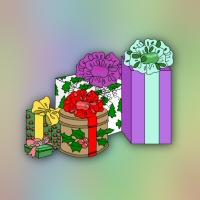 Who doesn't love Christmas presents? I know I do.
Who doesn't love Christmas presents? I know I do. For me, there is no better present then a "hug!" Especially if it comes from one of my grandchildren.
For me, there is no better present then a "hug!" Especially if it comes from one of my grandchildren. Thursday when we sit down for Thanksgiving dinner we will give thanks for all we have, remembrances of our dear and departed loved ones, and prayers of good health for our families and friends. There are so many ways to says thanks and express gratitude for all we have. Below are a few famous Thanksgiving quotes:
Thursday when we sit down for Thanksgiving dinner we will give thanks for all we have, remembrances of our dear and departed loved ones, and prayers of good health for our families and friends. There are so many ways to says thanks and express gratitude for all we have. Below are a few famous Thanksgiving quotes: It's hard to believe that we are already at the time of year when it will be snowing once again. In fact, it has already snowed an inch here and they are predicting snow for Thanksgiving Day. The good news is that it will melt quickly. The bad news is we're just at the start of the season. Oh, joy!
It's hard to believe that we are already at the time of year when it will be snowing once again. In fact, it has already snowed an inch here and they are predicting snow for Thanksgiving Day. The good news is that it will melt quickly. The bad news is we're just at the start of the season. Oh, joy!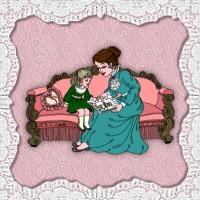 Don't you just love this quote from Dr. Seuss:
Don't you just love this quote from Dr. Seuss: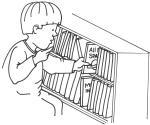 It is not enough to simply teach children to read;
It is not enough to simply teach children to read; If you've been a reader of my
If you've been a reader of my 
 In fact, I was watching a show on one of the cable channels about the greatest invention mankind has ever seen. They counted down through hundreds of inventions until they got to #1. Do you know what it was? The greatest invention mankind has ever seen was the invention of the printing press. Why, because it opened the whole world up to everyone and mankind was never the same again.
In fact, I was watching a show on one of the cable channels about the greatest invention mankind has ever seen. They counted down through hundreds of inventions until they got to #1. Do you know what it was? The greatest invention mankind has ever seen was the invention of the printing press. Why, because it opened the whole world up to everyone and mankind was never the same again. "What do you want to do?" "I don't know. What do you want to do?" "Hey, I know. Let's play dress-up." "Yeah! Let's play dress-up." "I'll be mommy." "No, I want to be mommy." "Mom, Linda won't let me be you." "Linda, let your sister be me."
"What do you want to do?" "I don't know. What do you want to do?" "Hey, I know. Let's play dress-up." "Yeah! Let's play dress-up." "I'll be mommy." "No, I want to be mommy." "Mom, Linda won't let me be you." "Linda, let your sister be me." In thinking about the anniversary of Raggedy Ann and about dolls in general I had to wonder
In thinking about the anniversary of Raggedy Ann and about dolls in general I had to wonder 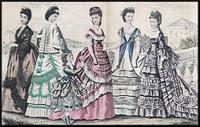 Hello, everyone. I hope you enjoy reading my BLOG. Everyone who knows me knows that I have always LOVED dolls, sewing, genealogy, and floral design since I was about 10 years old. I was always making my own clothes (you can never have enough), collecting or making dolls (you can never have enough), creating floral centerpieces (every holiday table needs one), creating Christmas decorations (you can never have too many) and researching my family genealogical tree (the past is vital to who we are today). So, I was so happy when I decided to start my own webpage which allowed me to combine my love of dolls, sewing, crafts, florals, and genealogy all into one.
Hello, everyone. I hope you enjoy reading my BLOG. Everyone who knows me knows that I have always LOVED dolls, sewing, genealogy, and floral design since I was about 10 years old. I was always making my own clothes (you can never have enough), collecting or making dolls (you can never have enough), creating floral centerpieces (every holiday table needs one), creating Christmas decorations (you can never have too many) and researching my family genealogical tree (the past is vital to who we are today). So, I was so happy when I decided to start my own webpage which allowed me to combine my love of dolls, sewing, crafts, florals, and genealogy all into one. Since I have also been a genealogy buff all my life, I wanted to find a way to honor my family's ancestors and relatives. I decided to name my patterns after them as a way to show that they haven't been forgotten. Hopefully, those who have gone before us are looking down and smiling.
Since I have also been a genealogy buff all my life, I wanted to find a way to honor my family's ancestors and relatives. I decided to name my patterns after them as a way to show that they haven't been forgotten. Hopefully, those who have gone before us are looking down and smiling.